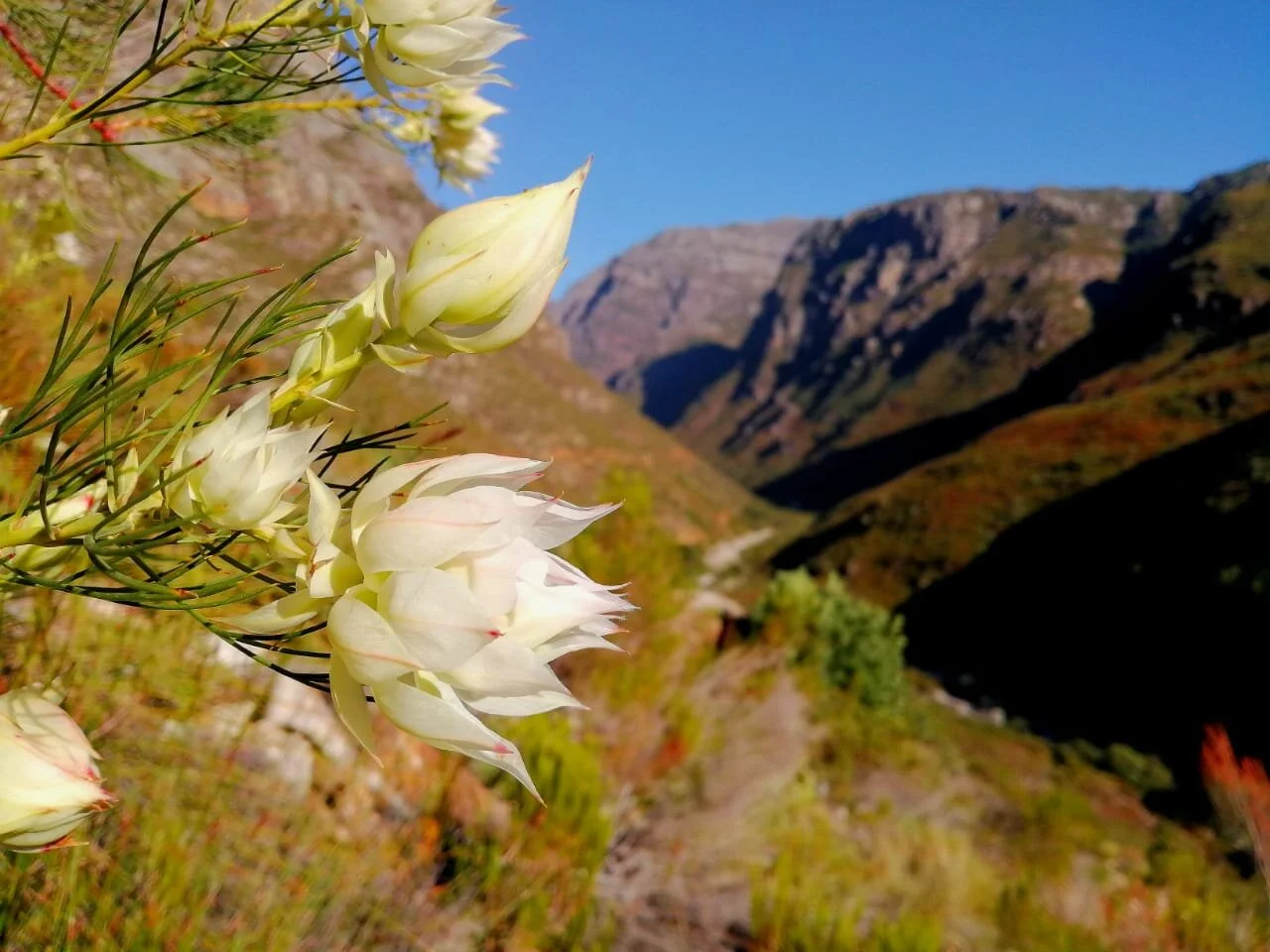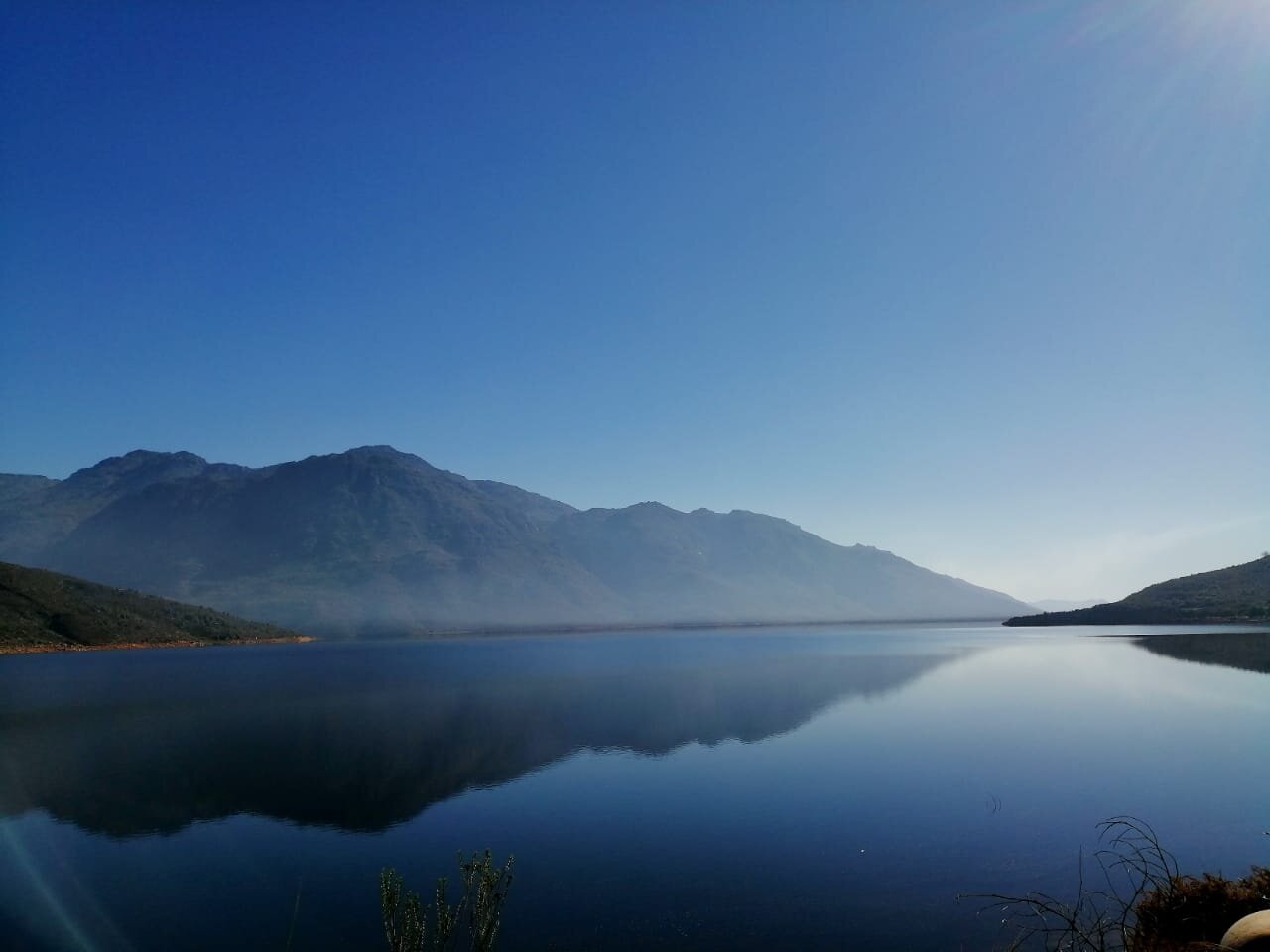Cape Floral Region
THE CAPE FLORAL REGION PROTECTED AREAS WORLD HERITAGE SITE
Guy Palmer
The concept of World Heritage Sites, WHS, was born out of the international realisation that the cultural and natural heritage assets of the world were coming under increasing threat from a wide range of sources. Countries were not always in a position to manage these assets in a manner that would ensure their persistence in the desired state for future generations. This resulted in the formulation and ultimately the adoption by UNESCO of the World Heritage Convention on the 16th November 1972. South Africa only ratified this convention on the 10th July 1997.
The idea of nominating the Cape Floral Region, CFR, for world heritage status was initiated by SANParks in 1999 with their desire to propose Table Mountain National Park, TMNP, as a World Heritage Site. IUCN however suggested that a nomination should be more representative of the CFR and thus Cape Floral Region Protected Areas World Heritage Site, CFRPA, was accepted by the World Heritage Committee, WHC, at their annual meeting in China in June, 2004.
The nomination of the CFRPA was always seen as a phased process with the larger more secure protected areas being selected for the initial submission/s with the remaining protected areas being subjected to a rigorous selection process as part of a future extension. The Extension Nomination Dossier, finally accepted by the WHC in June 2015 increasing the total area of the CFRPA from 557 584 ha to 1 094 798 ha consisting of 163 additional “component parts” or land parcels. Other protected areas, including declared Private Mountain Catchment areas and adjacent Marine Protected Areas form a buffer of 755 830 ha. A further extension of the CFRPA is envisaged that will hopefully include protected areas that were not “ready” for inclusion, such as the Dassenberg Coastal Corridor Partnership, or had unresolved “issues” such as the West Coast National Park, WCNP, that had to be removed from the END after the IUCN evaluation mission due to proposed phosphate mining in the park buffer and expansion corridor and over an aquifer that potentially feeds the Langebaan Lagoon, a Ramsar Site.
For properties to qualify for WHS status there is an increasingly rigorous nomination process that has to be strictly adhered to. The UNESCO World Heritage Centre, The Centre, in Paris manages this process. The Centre is supported by ICOMOS and IUCN, referred to as the Advisory Bodies, which respectively evaluate cultural and natural properties and supply the necessary technical expertise and support to The Centre. This is all clearly set out in the UNESCO Operational Guidelines for the Implementation of the World Heritage Convention (2013), which has evolved considerably over time. The most important aspect that has to be clearly demonstrated in the nomination dossier is that the property has Outstanding Universal Value, OUV, under at least one of the ten criteria, six relating to cultural properties and four to natural properties.
Fortunately for the CFR there is an excellent foundation of relevant knowledge that has been laid down over many decades by many different individuals and institutions from countries across the globe. This foundation of knowledge is unfortunately not being contributed to at the same pace as in the past. It was, however, still more than sufficient to put together or convincing argument that CFR should qualify for WHS status under two Criteria:
Criteria IX; be outstanding examples representing significant ongoing ecological and biological processes in the evolution and development of terrestrial, fresh water, coastal and marine ecosystems and communities of plants and animals;
Criteria X; contain the most important and significant natural habitats for in-situ conservation of biological diversity, including those containing threatened species of Outstanding Universal Value from the point of view of science or conservation.
Buffering mechanisms
The Operational Guidelines refers very specifically to a delineated Buffer Zone that is required for the mitigation of threats to the OUV of the property. It is however, mentioned in the proceedings of the International Expert Meeting on WHS and Buffer Zones held in Davos , that very often broader protective mechanisms will be required to adequately address the ever increasing array of threats to the OUV.
Due to the complexity of the arrangement of biodiversity across the landscape, several buffering mechanisms have been developed, and are in place, to support the long term persistence of the various habitats and species as well as the ecological and evolutionary processes. Many are also deemed important to mitigate for the effects of Global Climate Change. These mechanisms include UNESCO Biosphere Reserves, Landscape Initiatives, Stewardship Sites, Critical Biodiversity Areas, Important Bird and Biodiversity Areas, as well as protected area expansion strategies, business and biodiversity best practice, various legal instruments and planning products such as Spatial Development Frameworks, and Integrated Development Plans.
Together these mechanisms provide protection, often multilayered, to the areas surrounding the CFRPA. What is particularly significant, regarding these various mechanisms, is that together they provide more protection to the CFRPA than could possibly be effected by a single WHS Buffer Zone. They are designed for persistence, at a landscape scale, of species and processes. These mechanisms are in place, are operational and several are expanding and evolving, thus becoming increasingly effective. The Biosphere Reserves and Stewardship program, in particular, provide a wonderful example of private land owner support for the conservation of the biodiversity of the CFR and by default the CFRPA
Why World Heritage status should be good for the CFR
The value of World Heritage status can, and should, be viewed from several different angles. Simply the prestige of having a national “treasure” recognized as being of Outstanding Universal Value should not be underestimated. This international recognition must be used to elevate the visibility of the CFRPA. The level of consciousness relating to the national and provincial responsibility needs to be raised to ensure that this “treasure” is appropriately managed with the concomitant resources. This status should also be unashamedly used in tourism marketing and all relevant funding applications as well as in budget motivations. The impression is that, to date, we have not maximized on this opportunity.
WHS status, at least for the CFRPA, needs to be seen as an end product that is the result of much preparatory work over many decades: the cherry on the cake so to speak. Without a myriad of supporting management structures, procedures, legislation, etc. (i.e., buffering mechanisms) firmly in place, future persistence of the CFRPA would be problematic to say the least. These support structures have, like the complex biodiversity, continually evolved, albeit at a slightly different pace. They are, however, not going to be sufficient if not kept current through adequate resourcing.
To explore the conservation status of species, not just in the Cape Floral Kingdom, but around the world visit: https://worldheritageoutlook.iucn.org/








